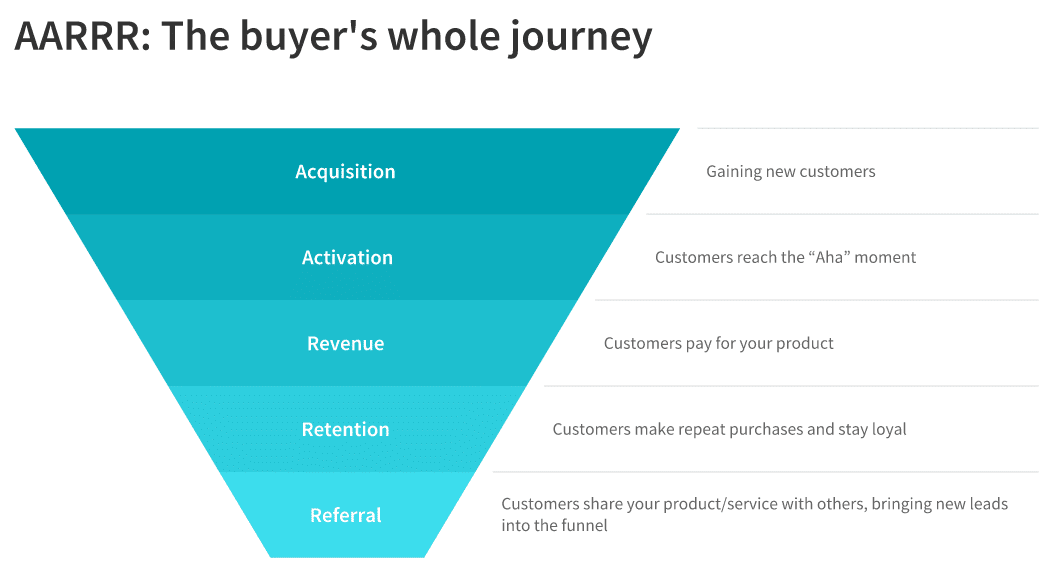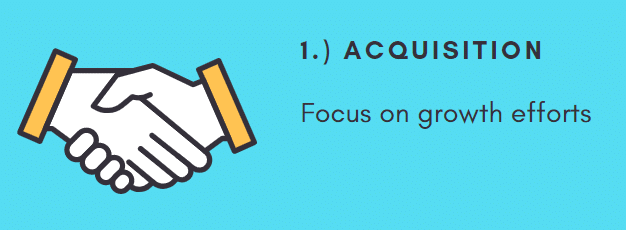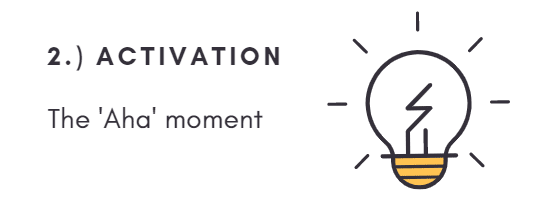Starting a business is hard, but sustaining the growth of a business is even harder. Fortunately, pirate metrics can help. We discuss exactly how to grow your business using pirate metrics, also referred to as AARRR metrics.
Pirate metrics are widely accepted as the five most valuable metrics for any startup to focus on, analyze, and monitor. That’s because they effectively measure your company’s growth. And at the same time, they’re practical and straightforward to implement.
What are the pirate metrics?
Pirate metrics are a way to categorize and group KPIs depending on what aspect of your business you want to measure. The groupings are as follows:
- Acquisition
- Activation
- Revenue
- Retention
- Referral
…or as an enthusiastic pirate would say, “AARRR!”
The five groupings align with your customer’s lifecycle stages, also called the customer journey or funnel. Each group helps marketers identify where they should focus their time to best optimize marketing and sales efforts.
You can’t talk about the pirate metrics without mentioning its founder, Dave McClure. Dave originally coined the acronym in a famous presentation at the Seattle Ignite Summit back in 2007, which has been forever immortalized on Slideshare.
Dave, the co-founder of 500 Startups and an active investor, came across a lot of tech startups that just couldn’t manage to scale properly. Being a successful entrepreneur himself, he knew exactly where these startups should focus their time and efforts. After all, he had personally struggled with growth himself.
Dave argued that for any startup to be successful, it should focus on just five key metrics or KPIs — the pirate metrics, AARRR. By focusing on just five key stages, entrepreneurs and marketers become more effective in solving problems at each stage of their business.
It’s essential to understand the framework of pirate metrics. Only when you know all the metrics will you be able to identify exactly where the leak is in your funnel and save your sinking ship.
So without further ado, let’s set sail and define the pirate metrics.
1. Acquisition
Acquisition is the first step in your user lifecycle. Typically, this is where most startups and marketers focus their growth efforts. Any way that allows someone to potentially find your business can be considered an acquisition channel.
Think of acquisition as all your lead generation strategies. For example, this could be organic search, SEM, social media, banner ads, cold outreach, and even print ads.
Acquisition determines the rest of your funnel’s size. But while volume matters, more value should be placed on the quality of your leads. A good practice is to set a time period during which you measure all the impressions and acquisitions for each specific channel. Then, identify which channels perform best in terms of volume, quality, and price.
After these initial tests, eliminate your lowest-performing channels and spend your time and resources on the few that work best for you. (Sometimes, Facebook or Instagram isn’t always the answer.) By looking at each channel individually, you can pinpoint areas to improve your lead generation and round out your marketing strategy.
What to optimize: Landing pages, content marketing, live chat, webinars, and basically anything related to engagement or lead generation
Relevant metrics: New website visits, retention and bounce rates, overall leads, landing page success rate in generating leads, traffic driven to the site by channel, customer acquisition rate by channel, customer acquisition cost (CAC) per channel, etc.
2. Activation
Activation is when a user actually tries your product or service. It’s their first time as a customer to experience the value your business has to offer. It’s that magical “AHA!” moment where it all clicks and you have a real user on your hands.
Of course, it’s not enough for someone to come on board, not be pleased, and abandon ship. You want to make the onboarding process as seamless as possible, so your customers will stick around for the next stage.
The difference between acquisition and activation is a bit confusing. Remember, you solve a customer’s question with content during the acquisition stage. But you are solving their problem with a sample of your product or service during activation. It’s the beginning of your relationship with a new customer.
What to optimize: Onboarding emails, customer success, onboarding assistance, tutorials, knowledgebase, UX, sales, etc.
Relevant metrics: New trial/freemium users, trial/freemium users who migrate to paid plans
3. Revenue
Revenue is pretty simple — it’s when a user finally pays for your product or service. By far, this is the most critical metric. Analysts can talk themselves in circles and show stakeholders vanity metrics to justify growth, but if revenue isn’t growing, nothing else really matters.
Revenue is when your lead finally takes the plunge, buys your product, and starts offsetting their CAC (customer acquisition cost). If we were following our funnel, this would only deal with the first purchase – but that’s not the case. Revenue in our framework refers to your business’ overall revenue.
After all. it’s so much cheaper to drive an existing, satisfied customer to make another purchase than it is to acquire a brand new one.
What to optimize: Product itself, customer experience, purchase process, exit intent pop-ups (cart recovery), etc.
Relevant metrics: CAC, those who start with trial/freemium and eventually become paying customers, new customer purchases, overall customer lifetime value, etc.
4. Retention
Customer retention indicated people are regularly coming back after initially trying your product or service.
For an e-commerce store, that means someone who buys from you more than once. For an app, that means users are regularly coming back to use your app. For SaaS companies, that means people are still subscribed and satisfied after their first two months.
The opposite of retention is churn. Customer churn is simply when a user decides to stop using your product or service. Although not the desired outcome, it’s highly important to measure churn and identify if you have a product/market fit.
If you see a significant drop-off from people who have just started using your product, then either something is wrong with your product or messaging. Churn rates can help you identify exactly where users are abandoning ship and take measures to prevent this.
On the other hand, when satisfied customers stick with you for long periods, they generate more revenue as compared to new customers because their purchases aren’t “counteracted” by customer acquisition cost.
The takeaway? Make your product a habit, focus on customer service, and upsell!
What to optimize: Customer service/customer experience, product, loyalty program, email marketing, and any way you offer value to repeat customers
Relevant metrics: Customer lifetime value, NPS score, and other customer satisfaction measures, retention rate vs. churn rate, average customer retention length (average amount of time customers stay active), etc.
5. Referral
Why spend a ton of money on marketing and content creation when you have loyal customers who can tell their friends about you? Since people are likely to trust their friends, they are more likely to become your customers, as well.
As one of the best ways to drive growth, customer referrals are the buried treasure in a marketing pirate’s life. They measure the percentage of current users who successfully bring new users into your funnel.
- 91% of consumers trust referrals from people they know, thanks to social proof
- 77% of consumers are more likely to buy a new product when learning about it from friends or family.
- 60% of marketers say that referral programs generate a high volume of leads.
What to optimize: Referral programs for both existing customers and referred leads, customer experience (people will only refer others to you if happy)
Relevant metrics: Participation rate (% of customers who refer friends), share rate (rate customers send referrals), number of referred leads, number of unique customers who make referrals, referral rate (% total purchases by referred customers), conversion rate (% referred leads who make a purchase), lifetime value of referred customers, number of positive reviews, and overall review ratings
Conclusion: Pirate metrics ‘AARRR’ worth it
Pirate metrics are a simple framework meant to help startups find their most important points of growth. These metrics are intended to help you simplify the customer lifecycle and stay on track.
By identifying bottlenecks and drop-offs, you’ll be able to optimize your funnel and highlight your customer’s most important interactions. At the very least, knowing your pirate metrics will allow you to paint a better picture of your funnel and how it affects your business.











